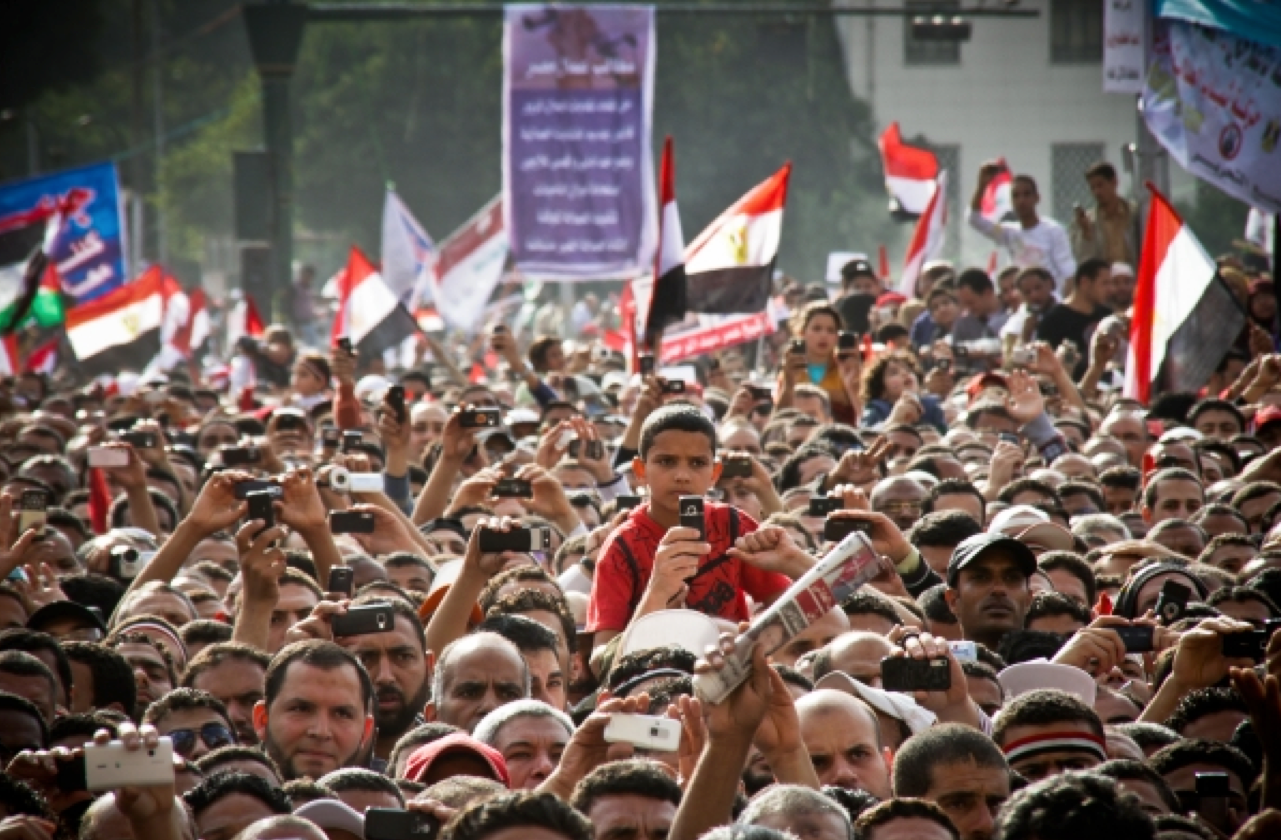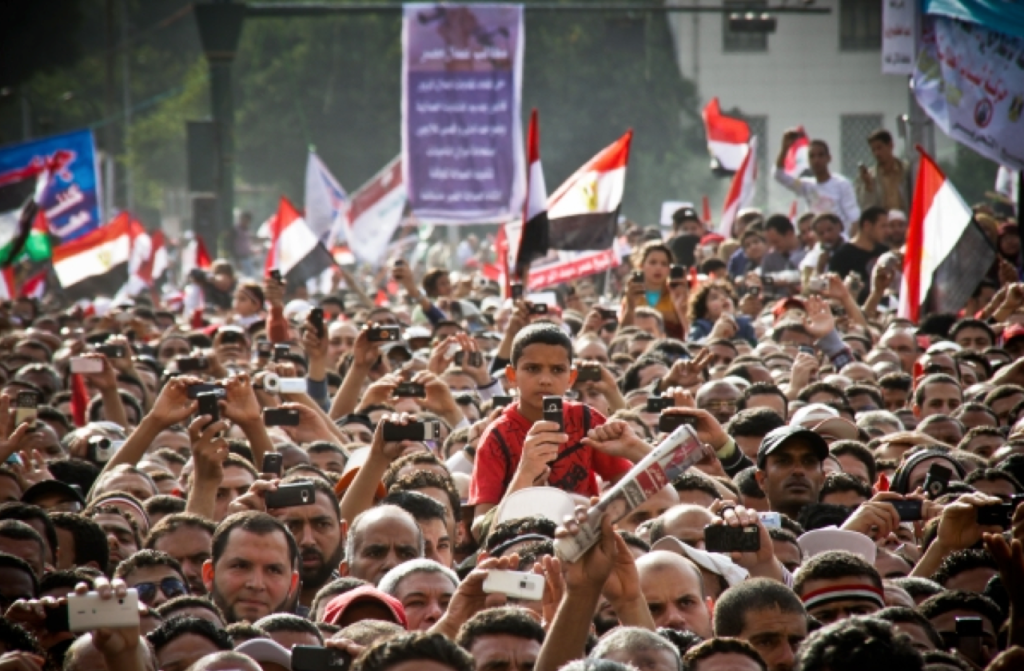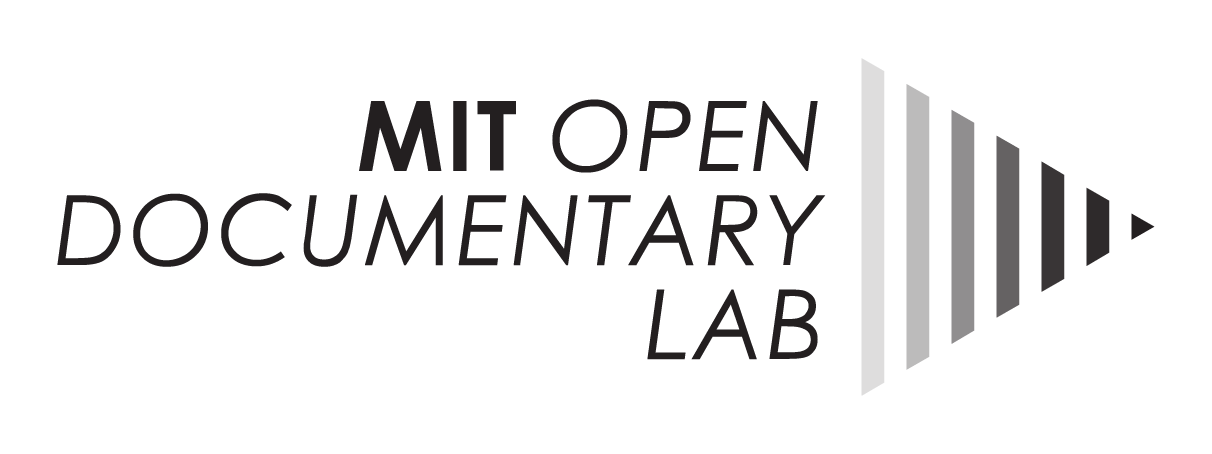
12 Mar Thoughts on Lara Baladi’s work | Thorsten Trimpop

Protesters during a speech in Tahrir Square, April 8, 2011. Photo by Mosa’ab Elshamy. © Mosa’ab Elshamy.
“Tahrir Square: On Archiving and Interpreting the Revolution”
Thoughts on Lara Baladi’s work by Thorsten Trimpop
I met Lara at MIT’s OpenDocLab shortly after she flew in from Cairo where she lives and works. The first thing we talked about was — of course — the revolution in Egypt. Our encounter brought back how I felt watching the news in the early days of 2011 and witnessing the extraordinay domino effect that took place in the Middle East. The whole world was breathless as one regime after another seemed to crumble: Tunisia, Egypt, Libya, Syria, Bahrain and Yemen.
I had just seen The Square by Jehane Noujaim and was impressed by the revolutionary energy and immediacy of the film. When I mentioned the film to Lara, her reaction surprised me: “This film is not the Egyptian revolution.” she said. “It is one person’s interpretation of the revolution. It is one story out of millions. What it does not address is the multitude of narratives that exist on the revolution, the ‘voice of the people,’ the many voices of the people who made a revolution in the age of social media. The linear narrative of a documentary seems obsolete in the case of Tahrir.”
I was intrigued to learn more about Lara’s perspective on the revolution. Over the course of several months, I came to understand what keeps her going and the nature of the project she came to do at MIT.
Lara is a multidisciplinary artist: photography, installation, sculpture, video and architecture are all part of her repertoire. As a fellow at the OpenDocLab during the 2014-2015 academic year, she is developing what she refers to as a “transmedia painting” on Tahrir and it’s aftermath. By “orchestrating data“, as she describes it, and bringing together fragments of audio, video, visuals and text in an interactive timeline of the revolution, her objective is to find patterns in one of the most remarkable historical events of the 21st century so far.
As an artist whose primary medium is photography, her project, Vox Populi: Archiving A Revolution in the Digital Age, was directly inspired by her fascination with how massively documented the revolution has been. She writes in When Seeing is Belonging, The Photography of Tahrir Square, published in Creative Time Reports, that “the Egyptian revolution, until today, remains the most digitally documented and disseminated event in modern history. Everybody filmed and/or took pictures. There was at least as many cameras as there were people in the Square”.
In 2011, Lara co-founded two media initiatives – Radio Tahrir and Tahrir Cinema. These were the first projects that stemmed from the archive she gathered on the revolution. Tahrir Cinema served as a platform to debate the political situation on the ground, and to share and collect footage on the revolution. While keeping the memory of the 18 days alive in the midst of overwhelming confusion, Tahrir Cinema also countered media propaganda and manipulation.
After creating the archive and collecting materials over the last four years, as well as locating numerous initiatives on documenting the Egyptian revolution, one of Lara’s objectives is to develop a system of research across these archives to help preserve the memory of the events. Ultimately, with Tahrir Square as a case study, her goal is to create an architectural framework which could serve any contemporary historical event and its aftermath.
“As my research unfolds, my project has become several projects”, she says during her talk at the Open Documentary Lab. “When the revolution began,“ she adds, “the distinction between reality and virtual reality disappeared. History as we understand it, history as a story defined by geographical borders, became obsolete. What happened in Tahrir Square belongs to all of us. In the past, history was written by the vanquishers but today, at the height of the digital age, the people who made history also have the possibility to write it.”
Thorsten Trimpop
Fellow, MIT Open Documentary Lab
Comparative Media Studies/Writing



